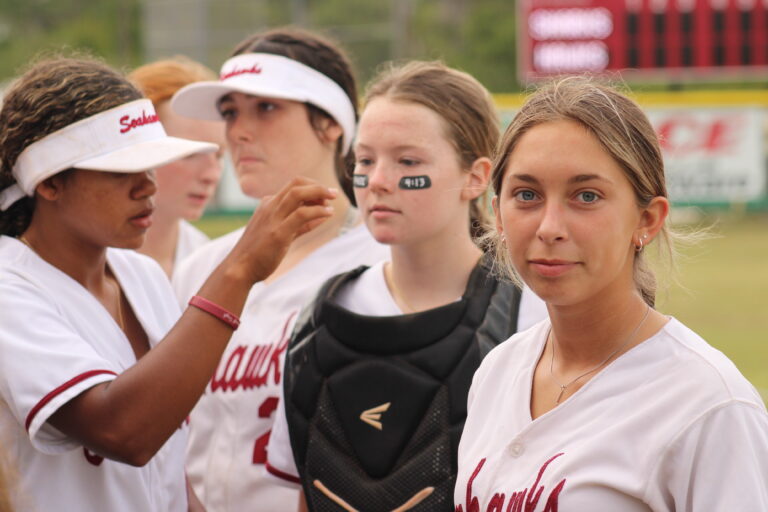Legacy Post Disclaimer
This is a #Legacy post imported from The Apalachicola Time’s previous platform. If you’re experiencing issues with this article, please email us at news@nevespublishing.com.
The Secret Lives of Words: Ursula, Ursa Major, and a few other bears
Les Harrison’s recent column on Florida’s black bears (See Dec. 3 Times “Bears are Florida’s largest native mammal”) brought back a mix of memories. First I thought of Les himself and the expertise he so generously shared as our University of Florida extension agent (now emeritus), when Alice was laboring to create the wondrous little botanical garden that is now our Apalach front yard. She had been accustomed to North Georgia’s mineral-rich acidic red clay, and Les showed her how to make Florida’s salty, alkaline sand surrender to her horticultural sorcery.
When we first visited Apalach and later bought our little cottage, the last thing I expected to see was black bears – gators, yes, and maybe feral hogs, but not bears. But as anyone who’s lived in the area very long is fully aware, there are plenty of them around, even prowling neighborhoods scavenging for trash-can treats. Once while driving south on Highway 59 from Wacissa to 98, in a violent thunderstorm, a huge bear lumbered across the road, dark and vast and fast as a locomotive. On another trip, heading north up 65, we spotted a car disabled at the side of the road. When we stopped to see if we could help, the driver described his close encounter with a bear; the animal had sauntered off unharmed, but the car clearly required some pricey repairs.
Despite the nuisance factors, bears have considerable charm. The three bears of Goldilocks fame have been delighting children ever since English poet Robert Southey published an early version of the fairy tale in 1837 (sans Goldilocks, who replaced Southey’s foul-mouthed hag in what was to become the most beloved version of the story, published in 1904). Kids love the Fuzzy Wuzzy tongue-twister too, first popularized in a song recorded in 1945 (my birth year) and later in a 1950 hit version by Rosemary and Betty Clooney.
The fuzzy wuzzies look so cuddly that we give our babies teddy bears to snuggle with (the toy was named for President Theodore “Teddy” Roosevelt for his refusal to shoot an injured bear on a hunting trip with friends in 1902, an incident spoofed in a Washington Post cartoon, which in turn led to the nickname). The comic-strip cat Garfield had his own teddy named Pooky, and Sesame Street’s Big Bird had one called Radar. In his 1957 chart-topper, Elvis crooned to his sweetheart, “I just wanna be your teddy bear.”
Smokey Bear protects our woodlands, and, as Les mentioned, Yogi Bear and Boo Boo (namesake of my long deceased but beloved feline, Boo Boo Bear) frolicked in Jellystone Park. As a kid, I adored Andy Panda cartoons. Our grands (and their dentists) love Gummy Bears, invented by German confectioner Hans Riegel in the 1920s and inspiration for the 1980s Disney TV cartoon series and the 2007 “Gummibär/I’m a Gummy Bear” song. And let’s not forget Paddington Bear (hero of more than 20 children’s books by Michael Bond), Iorek Byrnison (Lyra’s comrade in Phillip Pullman’s His Dark Materials), or A.A. Milne’s Winnie the Pooh – and its perennially popular Latin version, Winnie Ille Pooh, translated by Alexander Lenard, the only foreign-language book ever to become a New York Times best-seller.
The ancient Romans were likewise fascinated by bears, but less charmingly. With males averaging 300 pounds, the black bear is Florida’s largest native animal (besides the bison that had roamed here through the 18th century, died out, and were reintroduced to Paynes Prairie Preserve State Park in 1975). But the species common in ancient Italy, the European brown bear (Ursus arctos), was larger still, with adult males averaging 500 pounds – like our grizzlies, who are scarily dubbed Ursus arctos horribilis. Though occasionally kept as pets, the ancients more often hunted and ate them; the medical writer Galen recommended boiling the meat twice before serving, for ease of digestion. A guest at Trimalchio’s banquet in Petronius’ 1st-century A.D. picaresque novel, the Satyricon, asserts that men should feel free to gobble up bears, since bears freely gobble up men.
That fabled ferocity, as well as the animal’s size, strength, and speed so impressed the Romans, with their penchant for blood sports, that the majestic creatures were routinely captured and caged for later release in arenas like the Colosseum to be stalked and slain in staged wild animal hunts. One of the earliest recorded beast shows, in 169 B.C., featured 40 bears, along with lions or tigers and elephants; the most spectacularly fearful bears were given names like Crudelis/CRUEL and Omicida/manslayer (HOMICIDe).
Our word “bear” is Germanic, deriving from a Proto-Indo-European word meaning “the brown one.” Romans called the burly brown beast ursus (or ursa/she-bear), source of URSine/bearlike and our Florida URSID’s scientific name Ursus americanus floridanus. One of eight species in the family Ursidae, the animal belongs to the order Carnivora (from carnis/flesh + vorare/deVOUR), though black bears are in fact OMNIVORous (omnis=all), and to the sub-order Caniformia, meaning “doglike” (as in CANine and KENnel), which also includes badgers, foxes, and raccoons.
The URS- root is related to the ARC- in ARCTIC, from Latin arcticus. The Greek source-word arktos meant in origin “bear” but also referred to the constellation of Ursa Major, the “Great(er) Bear,” and then to the northerly regions where that constellation’s prominence was important to ancient seafarers as an aid to navigation. In one version of the myth associated with the constellation, Hera turned the princess Callisto into a bear after learning Zeus had seduced her; Zeus later rescued her and placed her, as Ursa Major, in the starry sky, along with their offspring, Arcas, the “Smaller Bear”/Ursa Minor, aka the Little Dipper (the Big Dipper is composed of the seven brightest stars in Ursa Major). The URSID meteor shower, which appears from about December 17-26 each year, peaking around the Winter solstice, radiates from Ursa Minor.
Latin ursa has also given us the name URSula, literally “little bear,” as in Ursula Andress, the Swedish-American actress whose movie breakthrough was in the role of bikini-clad Honey Ryder in the 1962 James Bond thriller, “Dr. No” (high-school boys, such as I was at the time, wishfully renamed her “Ursula Undress”). Though we sadly lost Sean Connery, filmdom’s first and most beloved Bond, this past October, Ms. Andress is alive and well, residing part of the year in Rome, part in Switzerland. She shares her name with the late science fiction writer Ursula Le Guin; with Ursula, the bearish sea-witch, villainess of Disney’s “Little Mermaid” (1989); and with the semi-legendary 4th-century St. Ursula, protectress of school-girls and virgins (Columbus named the Virgin Islands for her) and revered by the Catholic Order of URSulines.
Researching this column, I discovered a bear story I can, er, barely resist telling, though you may find the wordplay unbearable: a thirsty bear sits down at a bar and the barkeep asks, “What’ll you have?” The bear answers, hesitatingly, “Well, I’ll have a . . . a . . . beer.” Bartender asks, “Why the long pause?” Bear growls back, “Born with’em.”
We’ll talk about homonyms and homophones another time, as this essay may already be too much for you to bear.
Rick LaFleur is retired from 40 years of teaching Latin language and literature at the University of Georgia, which during his tenure came to have the largest Latin enrollment of all of the nation’s colleges and universities. His latest books are The Secret Lives of Words, a collection of nearly 60 of these essays, expanded with more than 250 illustrations, and Ubi Fera Sunt, a lively, lovingly wrought translation into classical Latin of Maurice Sendak’s classic, Where the Wild Things Are. His Facebook group, “Doctor Illa Flora’s Latin in the Real World,” numbers about 4,000 members. Rick and his wife Alice live part of the year in Apalachicola, under the careful watch of their French bulldog Ipsa.
This article originally appeared on The Apalachicola Times: The Secret Lives of Words: Ursula, Ursa Major, and a few other bears



Meet the Editor
David Adlerstein, The Apalachicola Times’ digital editor, started with the news outlet in January 2002 as a reporter.
Prior to then, David Adlerstein began as a newspaperman with a small Boston weekly, after graduating magna cum laude from Brandeis University in Waltham, Massachusetts. He later edited the weekly Bellville Times, and as business reporter for the daily Marion Star, both not far from his hometown of Columbus, Ohio.
In 1995, he moved to South Florida, and worked as a business reporter and editor of Medical Business newspaper. In Jan. 2002, he began with the Apalachicola Times, first as reporter and later as editor, and in Oct. 2020, also began editing the Port St. Joe Star.